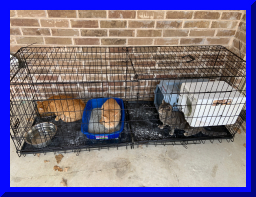 setups01.jpg |
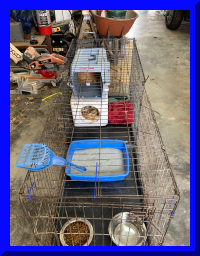 setups02.jpg |
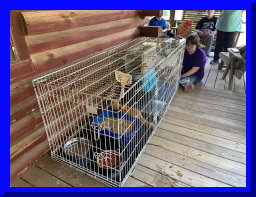 setups03.jpg |
| A typical setup - Housing in the rear, restroom in the middle, and cafeteria in the front. | In the winter we have either styrofoam homes or old coolers with a hole in the side for them to stay warm. | In summer, two carriers make up the shelter part. |
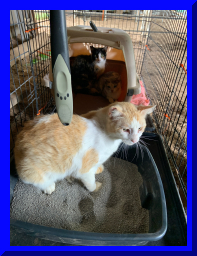 setups05.jpg |
 setups06.jpg |
 setups07.jpg |
| Three is our usual delivery. All cats are fixed and they usually get along with each other. | Some setups are in the barn. Good for the cats to get used to the smell and they don't bother the animals when released this way. | Sometimes you have a grumpy old man that needs his privacy. Here we set up a side cage for one gripy cat. He still had access to food and water and litter but had his own home. |
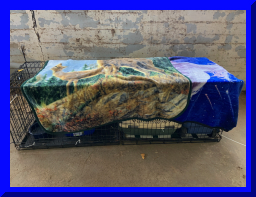 setups08.jpg |
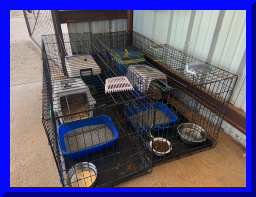 setups09.jpg |
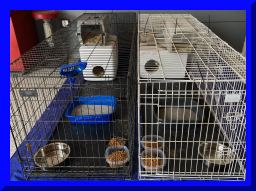 setups10.jpg |
| In really cold conditions, a big blanket is draped over the cage to keep some warmth in. | Also straw is added to the styro homes and ice chests to keep them comfortable. | Sometimes we bring more than three at a time. Then we have multiple setups. |
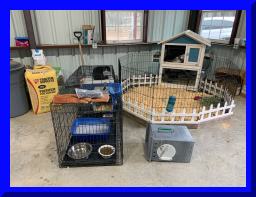 setups11.jpg |
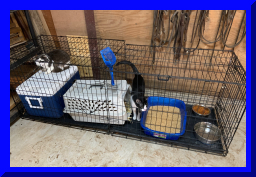 setups12.jpg |
 setups13.jpg |
| Cats next to the bunnies. They were released and didn't even bother them. | Even though the owner may want to hold them, we encourage them to let them go the full two weeks for adjusting to their surroundings. | Very rarely do we bring single cats out. The success rate of a single cat is very low. |
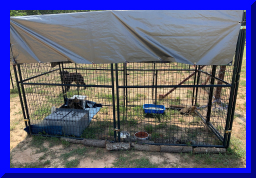 setups14.jpg |
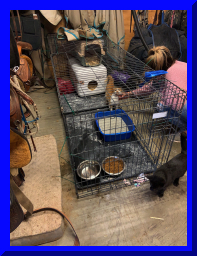 setups15.jpg |
|
| Large cages are very nice as long as you have shelter from sun and rain. (and as we found out - you have to have cage on top too or the cats climb the walls and escape!) | Other existing cats will usually hiss and carry on but over the two week period finally get used to the newbies. | |